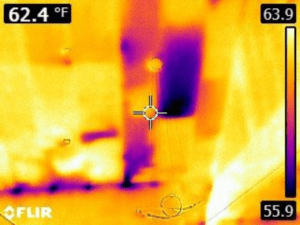Insulation has been an integral part of homes for thousands of years and the basic function, regardless of material used, has been the same: to provide a thermally resistant barrier that reduces the movement of thermal energy into and out of the home. While there have been many different types of materials used for insulating homes, their intended purpose remains the same.
Common types of insulation used in older and newer homes include:
· Cellulose
· Fiberglass batts or blow-in
· Rock wool
· Rigid foam
· Spray foam
· Vermiculite
Missing insulation in the attic space can not only allow cause hotter summer and colder winter temperatures (leading to increased heating and cooling costs), it can also cause ice dams to form. Ice dams formed when there is a non-uniform roof surface temperature. When temperatures are below freezing outside and heat escapes from the interior of the home into an uninsulated or poorly insulated attic space, this can melt snow and ice on the roof. As the liquid water moves down the roof to where the temperatures are below freezing, the water re-freezes and an ice dam is formed. As the water backs up from this ice dam, it passes through cracks and openings in the roof and flows into the attic space. From there it can also flow into and damage both the attic space and the living space.
Missing and inadequate insulation can also lead to increased heating and cooling costs and air is more freely allowed to pass through building materials and move heat into and out of the home through a process called convection. This is when energy is moved by a warm matter (usually a liquid or gas).
Adding insulation to areas of limited or missing insulation can help to inhibit air movement, thereby preventing significant heat loss and movement of moisture in the air. This can also help to prevent ice dams as insulation helps to keep warm air from leaving the living space and moving into the attic. Without this warm air to heat the roof surface and cause the ice to melt, the ice dam won’t form and water won’t back up into the attic space. While it is still possible for ice dams to form due to heat from the sun, lack of insulation is the most common cause.
Before you insulate or allow anyone to insulate your home, make sure to air seal gaps and cracks with spray foam. Properly air sealing your attic can be even more cost effective than adding additional insulation.
Below is an instructional video demonstrating how to insulate an attic space with fiberglass insulation:


